
- Fashion
“Mulan” Captures Lush Fluidity
Pedro Almodóvar’s All About My Mother and Volver, Oliver Stone Snowden, Anne Fletcher’s Dumplin’ (Jennifer Aniston), Netflix’s Narcos, and Dahvi Waller’s Mrs. America, currently on FX. Daigeler has received four Goya Award nominations and her artistry can be seen in Disney’s lush Mulan. Originally trained as a tailor, Daigeler realized she was more interested in creating costumes and telling stories than in embraced the world of theater and movies. Inspired by the script, she creates a specific mood board and graphic design before even meeting with the director. She spoke to us from Spain about the lush costumes of Mulan, emphasizing, “Mulan is not a documentary. We created our own visual language. I had the freedom to design.”

“Thinking about Mulan and her sequences on the battlefield, her heroic moments – riding, jumping, fighting – I thought she is a hero so what color should I give her?”, Daigeler says. “For me, she has to be red, because she is full of energy and so determined. I proposed that to the director, Niki Caro, and to Disney. They agreed. The metallic color was the idea of the metal armor, a lot of protection, so we used leather but painted it to match the color of metal. It had a little bit of reflection in it and with the red, conveys a lot of color and strength.”
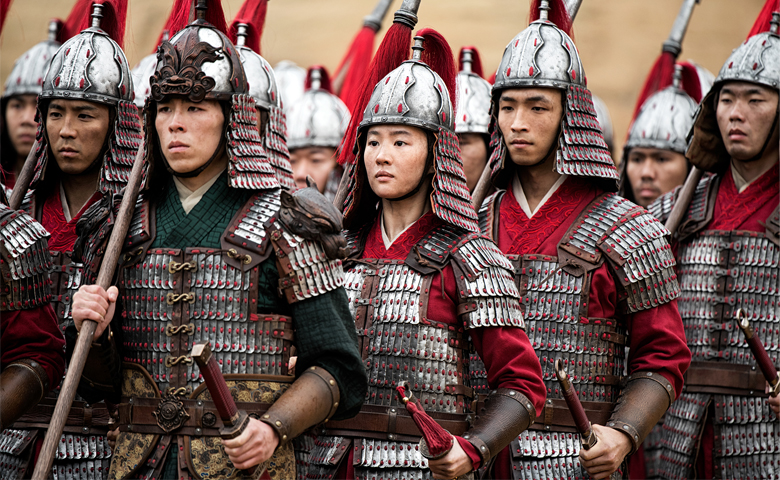
“The costumes are very heavy. We did many prototypes, to make all possibilities. To move beautifully with all her jumping, tai chi movements – but she does so specifically. It took us months to achieve the perfect prototype, and for all the extras, so they could do all of the movements required. That doesn’t mean they would be lighter; they were really heavy but still mobile.”
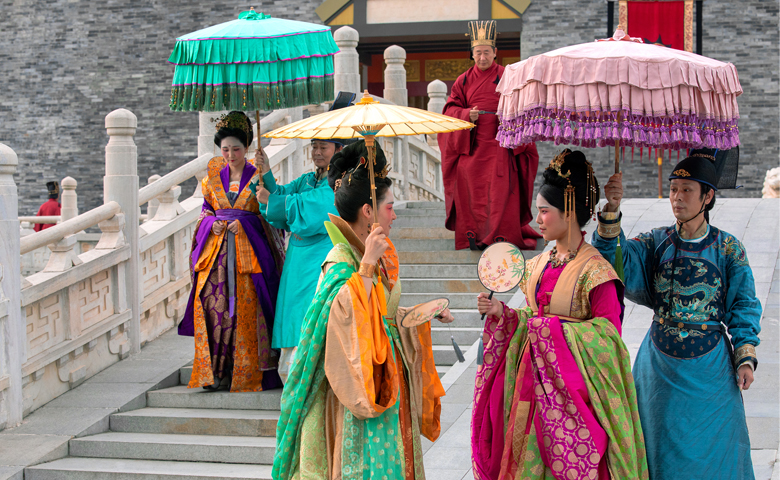
“Niki (Caro) had the idea for our Palace City that there are different types of groups. For the in the garden, I gathered a lot of beautiful silk, in all shades, anything that I liked. I made a combination between the fabrics. I would put three or four or even five different silks together. I would layer them and say this is the undergarment, this is the outer garment. For each group, I had a color scheme. I wanted to make sure that for me, Mulan is a colorful movie, but the colors must also look real, and I think I achieved that.”
“99% of my fabrics were pure silk, pure wool, and pure cotton. Really natural fabrics. We did a lot of dying. If one combination was not the right color cotton, we would just dye the right color to make the costumes.”
“We treated the background as though they were the main extra costumes, because I had so much time and such a great work crew, so I could really achieve that.”
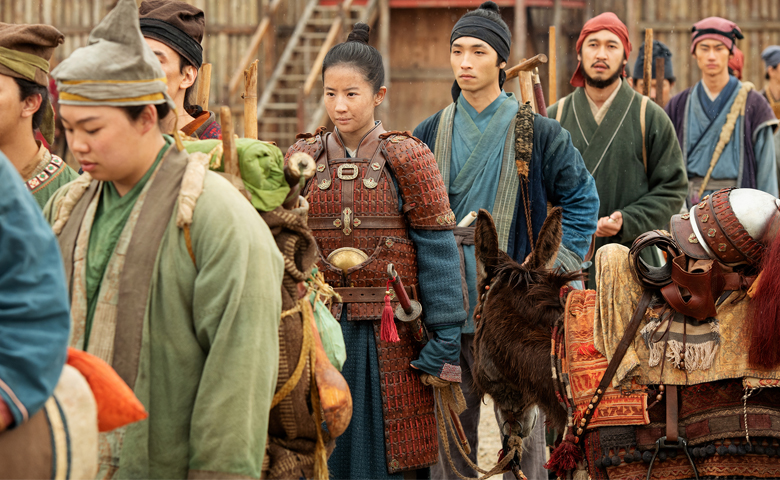
“I love teamwork and I work with and encourage my team a lot. I share my ideas and

“Village of men – concept: I didn’t want to make a big difference between the colors for the men and women.”
“In the village, I used a lot of linen and cotton and wild silk fabric with a lot of texture. A lot of fabric was dyed in the workroom. We couldn’t buy them. There are no cottons and linens of those colors, in such a color range. So, we had to dye meters and meters of all the shades, of every color palette.”
“I went to a lot of books for inspiration. I went to China. I had Chinese people on my crew. I’ve visited a lot of museums. I took from everywhere, but we did our own Mulan. I took inspiration from the Tang Dynasty – not that I wanted only the Tang Dynasty but also with many multicultural inspirations and language.”
“We developed our own Mulan world. That could work for the whole world because the Disney movie will reach everybody and be accepted by everybody. I tried to be very respectful to Chinese history, which I look to for inspiration in creating my own recipe. My own world.”
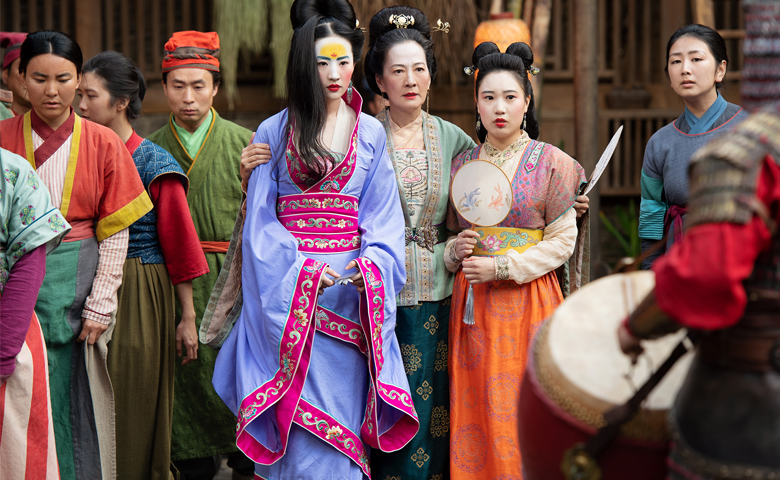
“It’s Mulan’s outfit for the matchmaking. We looked at different colors and decided on the lilac to express who she is at that moment. It is all hand-embroidered, more than 12m with a lot of symbols like the Magnolia and the Phoenix. The Phoenix is her spiritual guard/friend/protector; in Chinese, “Mulan” means “magnolia”. It’s a very symbolic dress and important that she was covered with the symbolic embroidery.”
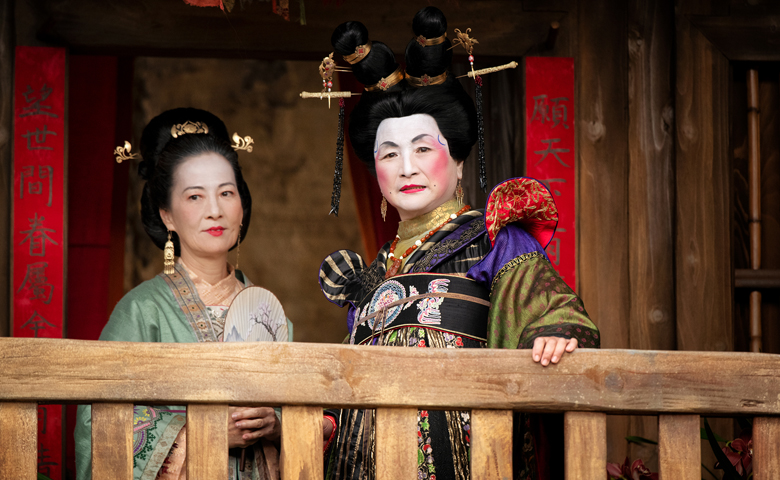
“We worked very closely together. Denise Kum is a friend of mine. This is our third collaboration. We worked together on the concept art and developed our own style. I provided her with all the hairpins that she needed. We did all of the fittings together. It was a very easy working relationship as we know each other, we respect each other, and on top of that we are friends.”
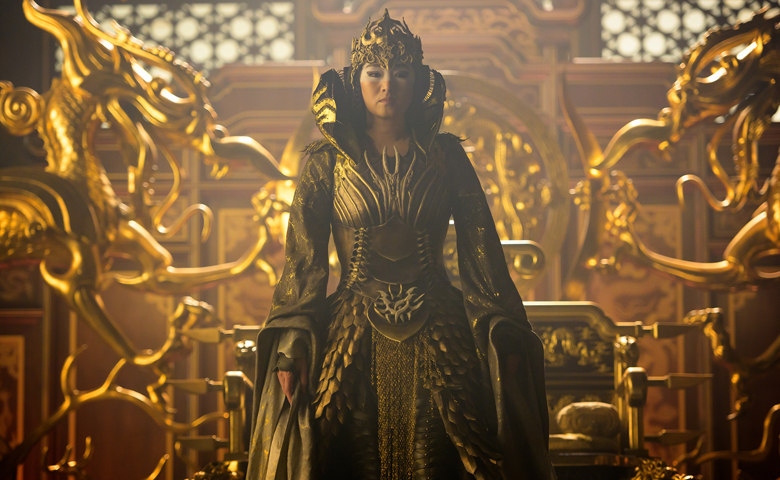
“Each part of the story has its own palette. Here, gold and browns inspired by hawk feathers. It took quite a while to get to this, we started with a different concept. She also had to be in armor – she is a very strong warrior. She had three different armors. In the throne room, she thinks she is the winner. The costume has to reflect that. That is why I made her in gold with the background brown, especially for the throne chair. I wanted her in harmony with the fantastic golden throne. My inspiration was the throne chair, with all this inspirational light around her.”

Böri Khan (Jason Scott Lee) is our main bad guy. I wanted him contemporary and very powerful in his black leather, with a lot of volume, so in all of his movements and amazing stunts, the skirt of his coat moved with him. It has a lot of detail. We treated the leather specially – it has a lot of texture and is inspired by the Rouran tribes and modern fashion designers like Rick Owens. He was really outstanding in his black leather, like a contemporary-inspired antihero.

